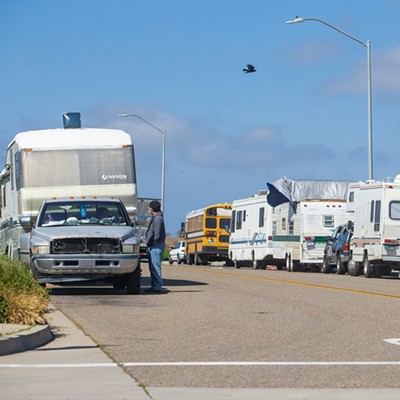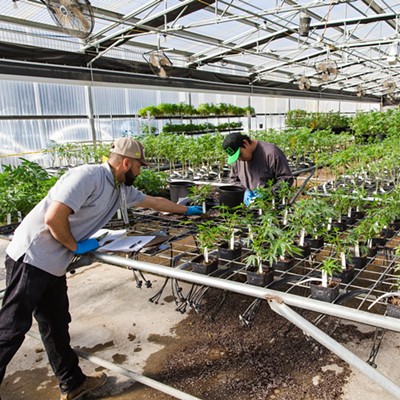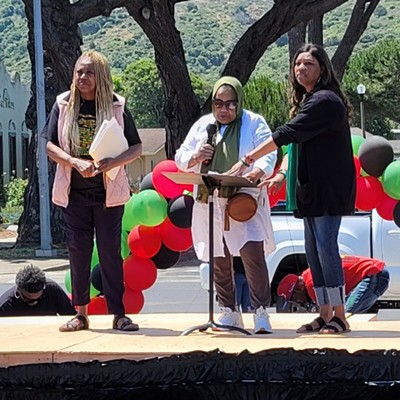Jan. 1, 2018, marked the first day California welcomed recreational cannabis to the legal market. Since then, municipalities across the state have passed laws either to regulate the product or, as in conservative counties like Kern, ban it entirely. That southern Central Valley county stands in stark contrast to its neighbor to the west, Santa Barbara, which is moving at a methodical pace to slowly welcome what was largely a black market industry to the mainstream.
In fact, the Central Coast county is currently leading the pack in terms of state-issued cultivation licenses. “The numbers are huge right now,” said Santa Barbara County Deputy CEO Dennis Bozanich, who added that the current tally was somewhere between 600 and 700 total licenses.
That number jumped from the March totals when California’s Bureau of Cannabis Control said that 500 of its 2,500 state-issued cultivation licenses came out of Santa Barbara County.
Bozanich told the Sun the vast amount of prospective business owners located in the county was part of the reason the Board of Supervisors had adopted a moderate-to-low tax tactic when it comes to cannabis.
Currently, the county is considering taxing gross receipts: 6 percent on retail dispensaries, 4 percent on cultivation, 3 percent to manufacturers, 1 percent to nurseries and distributors, and 8 percent on micro businesses. Residents will vote on the issue in the primary election on June 5.
“I think we tried to do something reasonable and measured and with support of a good revenue source but not be a burden to the industry too,” Bozanich said.
The move is somewhat emblematic for the region as a whole as it grapples with just how to create a scenario that is mutually beneficial to governments and cannabis business owners. As one marijuana advocate, who requested anonymity, told the Sun in December 2017, “It’s not every day a new revenue stream comes and bites you in the ass.”
Tip-toeing the line between beneficial regulation and crippling taxes has become a common theme in Santa Barbara County, with the county slowly rolling out ordinance after ordinance while cities like Lompoc chose to do away with taxes all together.
On March 20, Lompoc’s City Council shot down a proposed ordinance that would have introduced a tax on commercial cannabis. Voters would have seen the measure on the Nov. 8 ballot.
“This isn’t a get-rich scheme here,” Councilmember Dirk Starbuck said at the meeting, adding that while he believed the new cannabis businesses may provide some economic boost to the city, it would “probably be invisible,” once established.
Councilmember Mosby, who, like Starbuck, voted to not tax the industry, said the economic benefit that could be obtained from taxes would be “far outweighed by filling up vacant buildings and bringing jobs to this town that we desperately need.” The choice to avoid taxing the industry comes during a period when the city is attempting to grapple with paying out roughly $70 million in pension and retirement funds over the next decade. During the city’s last biennial budget deliberations—which lasted multiple months due to disagreements among the council members—several staff positions were floated to be cut, but ultimately were not, including the city’s fire marshal, a position that would be integral to inspecting and enforcing code with cannabis operators.
Lompoc’s no-tax decision follows the city’s other policies adopted since Jan. 1, which includes not only allowing unlimited retailers (Santa Barbara County, for example is only allowing eight within the entire county’s unincorporated area) but will also allow “cannabis lounges,” or places where marijuana can be smoked or consumed on-site.
Lompoc is one of the only cities in California planning to allow such businesses to operate within its limits.
“They can corner the market on retail, but manufacturing may be a little different,” Bozanich explained, adding that many businesses had told county staff they would prefer to have a way to cultivate and process the plant at the same location. “That’s a pretty significant financial and competitive advantage to them,” as opposed to setting up a manufacturing shop in Lompoc and buying the product from a cultivator outside the city. Cultivation is one of the few areas of the industry Lompoc has not fully embraced, partly due to the limited amount of properly zoned parcels available for it.
“This is where tax rates become consequential because those margins become razor thin,” Bozanich said, adding that the next three to five years would be highly competitive for cannabis operators and that the industry in its early phases would see a high attrition rate as bigger, sounder businesses gobble up smaller, less efficient competition. “The differential tax rates become a little bit more impactful in where you site your business or where you cultivate.”
California currently has a 15 percent excise tax on retail sales prices of marijuana, along with a $9.25 per ounce dry weight tax; there’s also 7.75 percent in local sales taxes (6 percent state, 1 percent local, a half percent to public safety, and a quarter of a percent to the county). Bozanich said the state was considering lowering those numbers in order to be more accommodating to cannabis owners, many of whom are being priced out by the current rates.
According to Lompoc City Attorney Joe Pannone, six applications for business permits have thus far been filed. He did not clarify what types of use those businesses were seeking for their parcels or spaces. “Those are going through the review process,” he said.
The Lompoc council’s decision on April 3 to remove dance studios from the “youth center” designation opened up several more locations within the city for cannabis use, and the council is expected to reduce certain buffer zones from youth centers from 600 to 400 feet at its next meeting. After that, those within the local cannabis industry believe that more applications will be filed.
In lieu of taxes, the city charges a one-time $11,900 application fee that doubles as a deposit from the business owner with an additional $1,100 per person who has a financial interest.
“The city uses that money to cover 100 percent of costs for reviewing those applications and then once the applications are granted, if they are granted, for reviewing [operations],” Pannone said.
Santa Barbara County does not have a fee structure in place yet for the application process, but Bozanich said the supervisors would tackle the issue at their May 1 meeting. As always, he added, supervisors will try to walk the line between benefiting from a new industry, without capping its potential.
Staff Writer Spencer Cole can be reached at [email protected].









